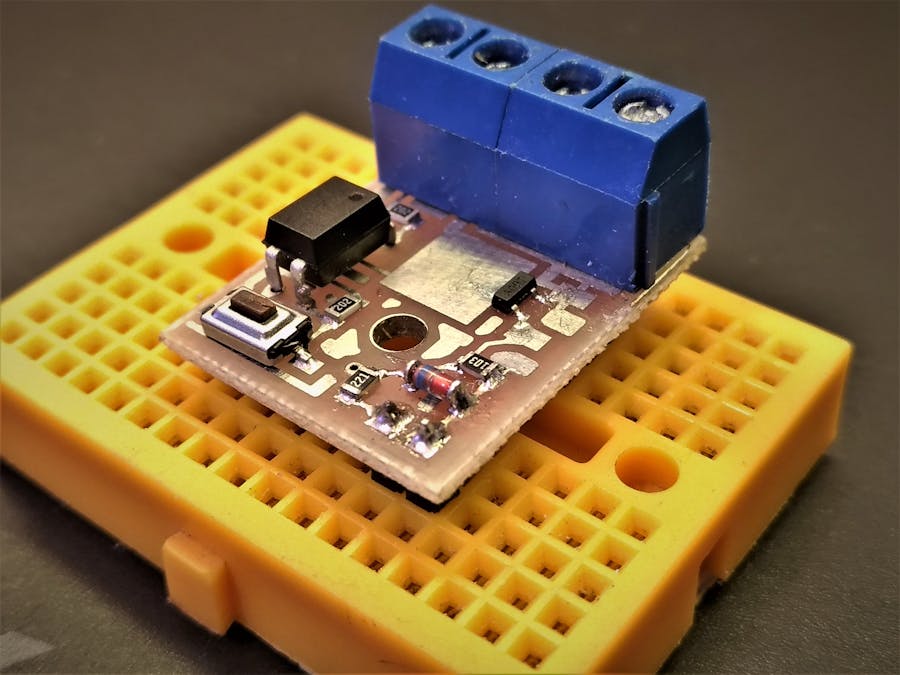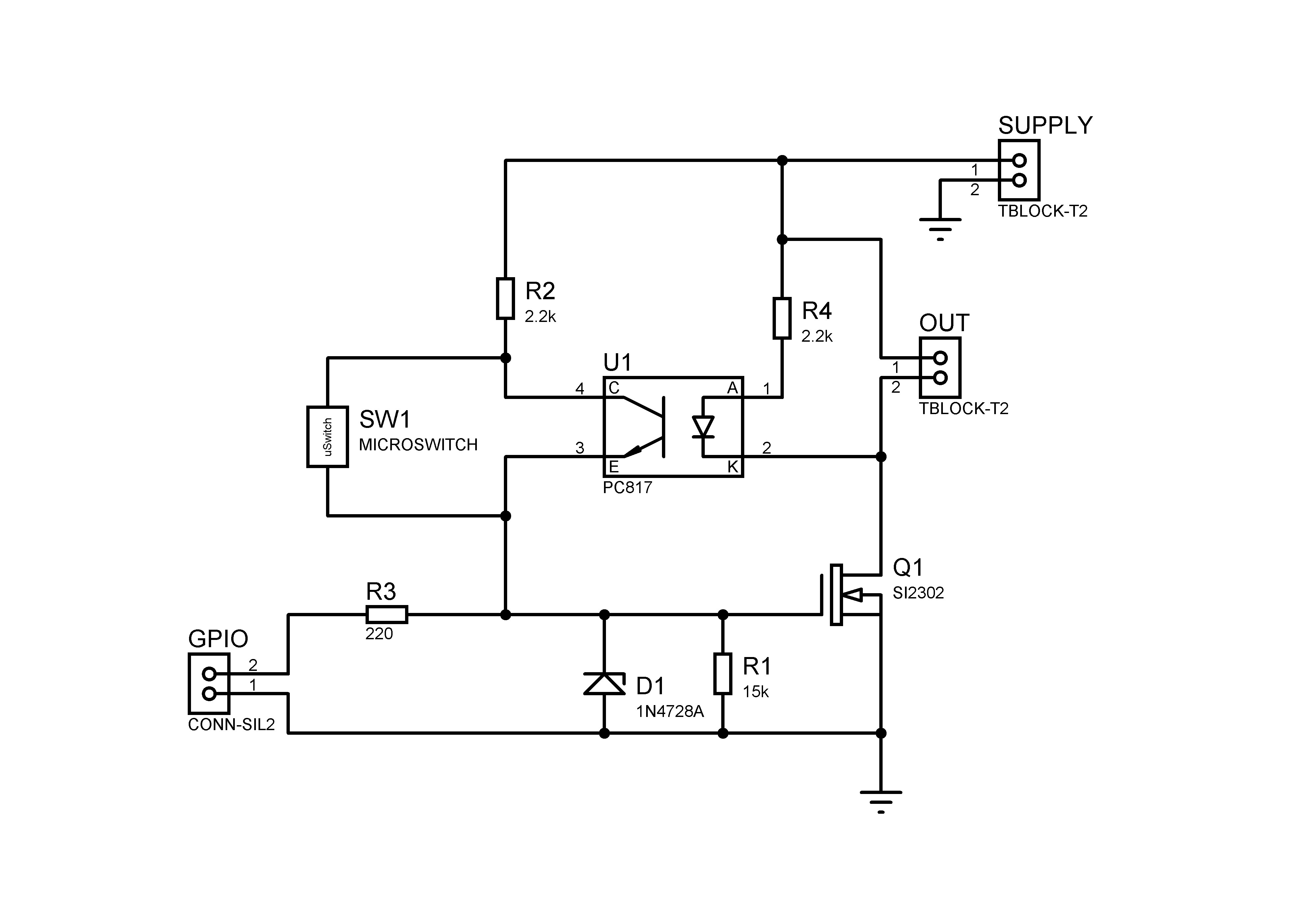There are many E-fuses available both precises ones, used in industrial or critical situations, and [cheap] maker-friendly ones which despite doing their job, but are not suitable for protection of e.g. a $10k device. still, they are a perfect choice for simple, DIY projects.
In this project, I tried to make a simple one using this article. here's the schematic from the article:
- Instead of relays, it uses semiconductors. a suitable N-MOS with proper heat-sinking would last much more than mechanical solutions.
- It's microcontroller-friendly. use a single GPIO to read the status, or set/reset the fuse.the zener diode clamps the voltage to 5V so the GPIO won't be damaged.
- Flexible. you can change N-MOS for any voltage-current combination. you have to choose logic-level transistors if you want to be able to control it with the microcontroller.for manual controlling, you can get rid of the R1, D1 and choose any N-MOS you like. as long as the opto-isolator can afford it. you have to pull-down the gate of N-MOS using a 47K resistor.
- The trigger threshold is not predictable. the fuse trips when the current going through R4 is less than sufficient to keep the opto-isolator on. so it's a short protector, not a variable fuse.
- the response time, despite being better than the mechanical ones, is still not so fast. the trip time depends on the opto-isolator's response time. it varies for various models.
- Care must be taken when choosing the mosfet, according to above. if the mosfet's maximum current capability is tightly close to trigger threshold, it may be damage before the circuit turns off. so choose a mosfet with a current capability a little higher than the maximum short circuit value.
Finally, despite its somehow negligible drawbacks, it's still well-suited for protection of various low current applications like tiny bench power supplies, DC motors, high power LED lights, arduino's regulators used by other modules and much more. it's tiny, flexible and easily made from off the shelf components available to many makers toolboxes
.









Comments
Please log in or sign up to comment.